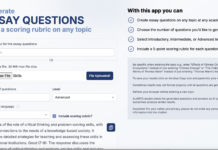U.S.Department of Education (2014) Web Tables: Enrollment in Distance Education Courses, by State: Fall 2012 Washington DC: U.S.Department of Education National Center for Education Statistics
Hill, P. and Poulin, R. (2014) A response to new NCES report on distance education e-Literate, June 11
The U.S. Department of Education’s Institute of Education Sciences operates a National Center for Education Statistics which in turn runs the Integrated Postsecondary Education Data System (IPEDS). IPEDS is:
‘a system of interrelated surveys conducted annually by the U.S. Department’s National Center for Education Statistics (NCES). IPEDS gathers information from every college, university, and technical and vocational institution that participates in the federal student financial aid programs. The Higher Education Act of 1965, as amended, requires that institutions that participate in federal student aid programs report data on enrollments, program completions, graduation rates, faculty and staff, finances, institutional prices, and student financial aid. These data are made available to students and parents through the College Navigator college search Web site and to researchers and others through the IPEDS Data Center‘
Recently IPEDS released “Web Tables” containing results from their Fall Enrollment 2012 survey. This was the first survey in over a decade to include institutional enrollment counts for distance education students. In the article above, Phil Hill of e-Literate and Russell Poulin of WCET have co-written a short analysis of the Web Tables released by IPEDS.
The Hill and Poulin analysis
The main points they make are as follows:
- overall the publication of the web tables in the form of a pdf is most welcome, in particular by providing a breakdown of IPEDS data by different variables such as state jurisdiction, control of institution, sector and student level
- according to the IPEDS report there were just over 5.4 million students enrolled in distance education courses in the fall semester 2012 (NOTE: this number refers to students, NOT course enrollments).
- roughly a quarter of all post-secondary students in the USA are enrolled in a distance education course.
- the bulk of students in the USA taking distance education courses are in publicly funded institutions (85% of those taking at least some DE courses), although about one third of those taking all their classes at a distance are in private, for-profit institutions (e.g. University of Phoenix)
- these figures do NOT include MOOC enrollments
- as previously identified by Phil Hill in e-Literate, there is major discrepancy in the number of students taking at least one online course between the IPEDS study and the regular annual surveys conducted by Allen and Seaman at Babson College – 7.1 million for Babson and 5.5 million for IPEDS. Jeff Seaman, one of the two Babson authors, is also quoted in e-Literate on his interpretation of the differences. Hill and Poulin comment that the NCES report would have done well to at least refer to the significant differences.
- Hill and Poulin claim that there has been confusion over which students get counted in IPEDS reporting and which do not. They suspect that there is undercounting in the hundreds of thousands, independent of distance education status.
Comment
There are lies, damned lies and statistics. Nevertheless, although the IPEDS data may not be perfect, it does a pretty good job of collecting data on distance education students across the whole of the USA. However, it does not distinguish between mode of delivery of distance education (are there still mainly print-based courses around)?
So we now have two totally independent analyses of distance education students in the USA, with a minimum number of 5.5 million and a maximum number of 7.1 million, i.e. between roughly a quarter and a third of all post-secondary students. From the Allen and Seaman longitudinal studies, we can also reasonably safely assume that online enrollments have been increasing between 10-20% per annum over the last 10 years, compared with overall enrollments of 2-5% per annum.
By contrast, in Canada we have no national data on either online or distance education students. It’s hard to see how Canadian governments or institutions can take evidence-based policy decisions about online or distance education without such basic information.
Lastly, thank you, Phil and Russ, for a very helpful analysis of the IPEDs report.
Update
For a more detailed analysis, see also:
Haynie, D. (2014) New Government Data Sheds Light on Online Learners US News, June 13










 Dr. Tony Bates is the author of eleven books in the field of online learning and distance education. He has provided consulting services specializing in training in the planning and management of online learning and distance education, working with over 40 organizations in 25 countries. Tony is a Research Associate with Contact North | Contact Nord, Ontario’s Distance Education & Training Network.
Dr. Tony Bates is the author of eleven books in the field of online learning and distance education. He has provided consulting services specializing in training in the planning and management of online learning and distance education, working with over 40 organizations in 25 countries. Tony is a Research Associate with Contact North | Contact Nord, Ontario’s Distance Education & Training Network.


This is one of the key blogs, which pours in the buckets of information on this topic. I appreciate time taken by you to share this information.
The best ones I have read recently.